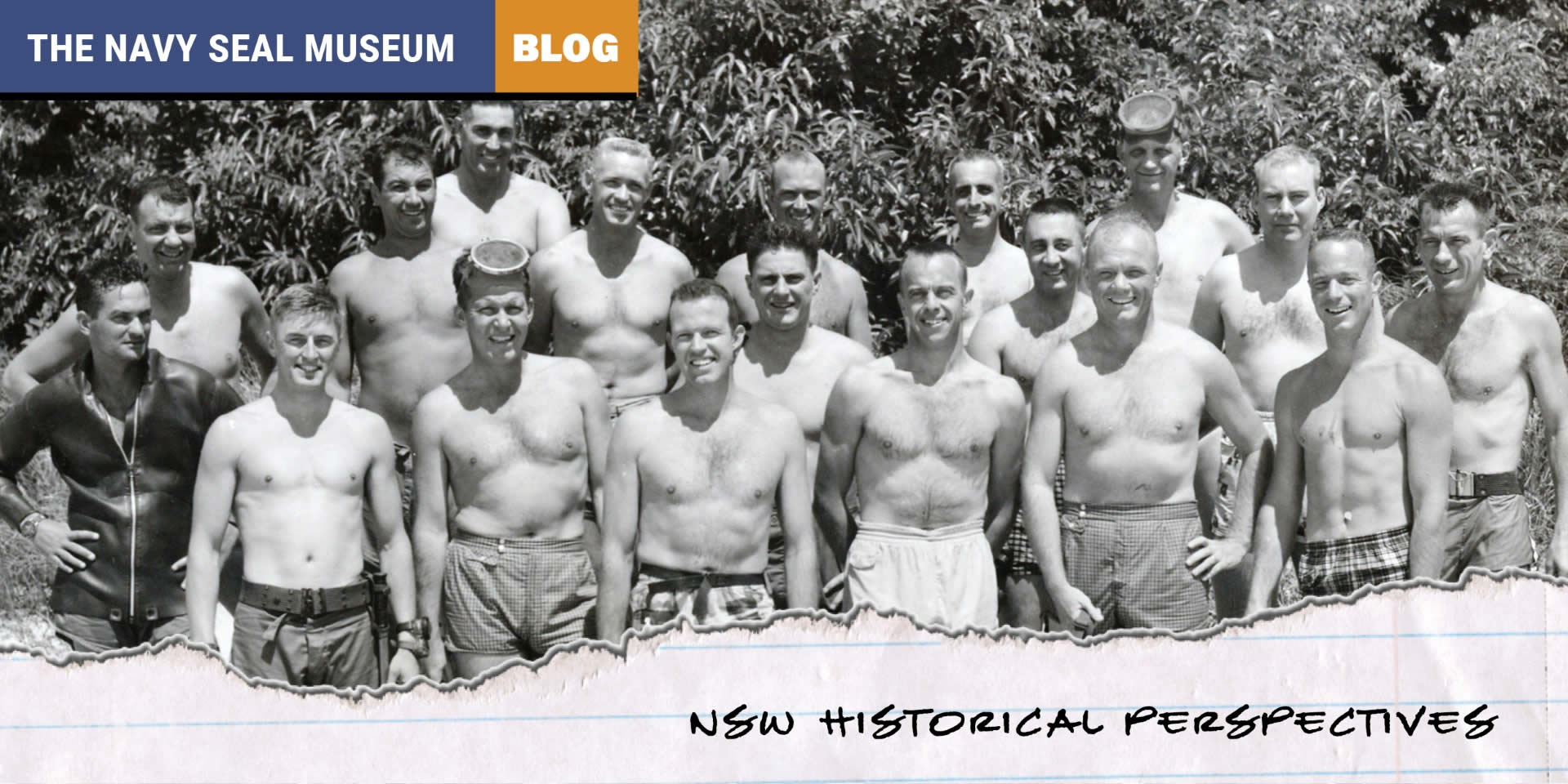
Navy SEAL FROGMEN
This story was written in 2011 in collaboration with Captain (SEAL) Norm Olson, USN (Ret.), who was the founding director of the Navy SEAL Museum. The story has been condensed and updated with revisions.
In January 1962, the U.S. Navy’s SEAL Teams were established, yet to this day, SEALs often refer to themselves as Frogmen. How, then, has this come about? During World War II, the Naval Combat Demolition Units (NCDUs), training in Fort Pierce, Florida for the Normandy Invasion, referred to themselves as “Demolitioneers.” That name caught on, and was adopted throughout the war as Fort Pierce men were subsequently deployed to the Pacific Underwater Demolition Teams (UDTs).
The term “Frogmen” was first used by British combat divers during World War II, but it was never adopted by the UDTs. Their trademark was demolitions, and they liked being referred to as “Demolitioneers.” In 1947, however, Commander Doug “Red Dog” Fane, commander of the east coast UDTs, and Dr. Chris Lambertsen, OSS Maritime Units (OSS MU) Medical Officer and primary trainer, collaborated to bring MUs tactics, techniques, and procedures into UDT. Once realized, the media began referring to the UDT men as Frogmen in print, but the men disliked the moniker and refused to use it.
In fact, in Commander Fane’s book, “The Naked Warriors,” first published in 1956, the word “Frogman” is used only once, and that’s in the Preface of the book, which reads (paraphrased): “I am receiving hundreds of letters from the youth of our land requesting information on how to become “Frogmen.” It is hoped this unvarnished account will answer their queries and whet their interest in the U.S. Navy and the sea.” Commander Fane obviously preferred “Naked Warriors,” he thought it was a more fitting description of the early UDT men, as their kit consisted only of fins, facemasks, lead lines, slates, web belts, and K-bar knives.
That notwithstanding, in the late 1950s, the Frogman label began to stick, and the men began embracing it. Perhaps it was because the UDTs were the first in the U.S. Navy to adopt SCUBA diving, and their capabilities separated them from the traditional rope-line Navy divers. Also, there were a plethora of books and comic books written about UDT with a lot of titles and references to Frogman or Frogmen. And, probably most impactful, the movie “The Frogmen,” starring Richard Widmark is often touted as the reason many men volunteered for UDT training.
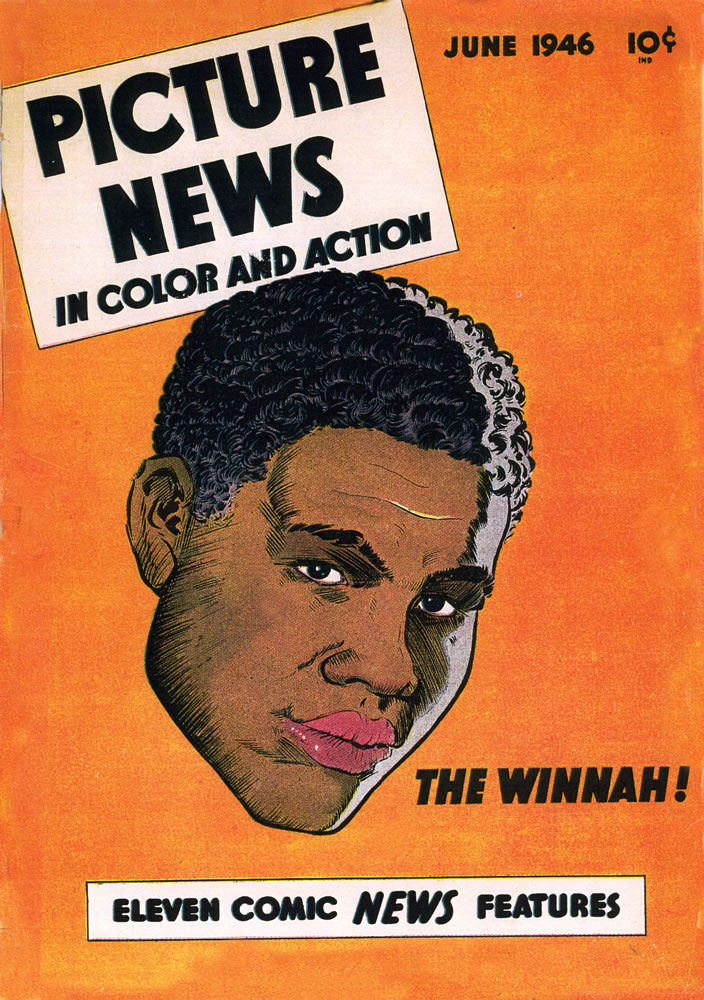
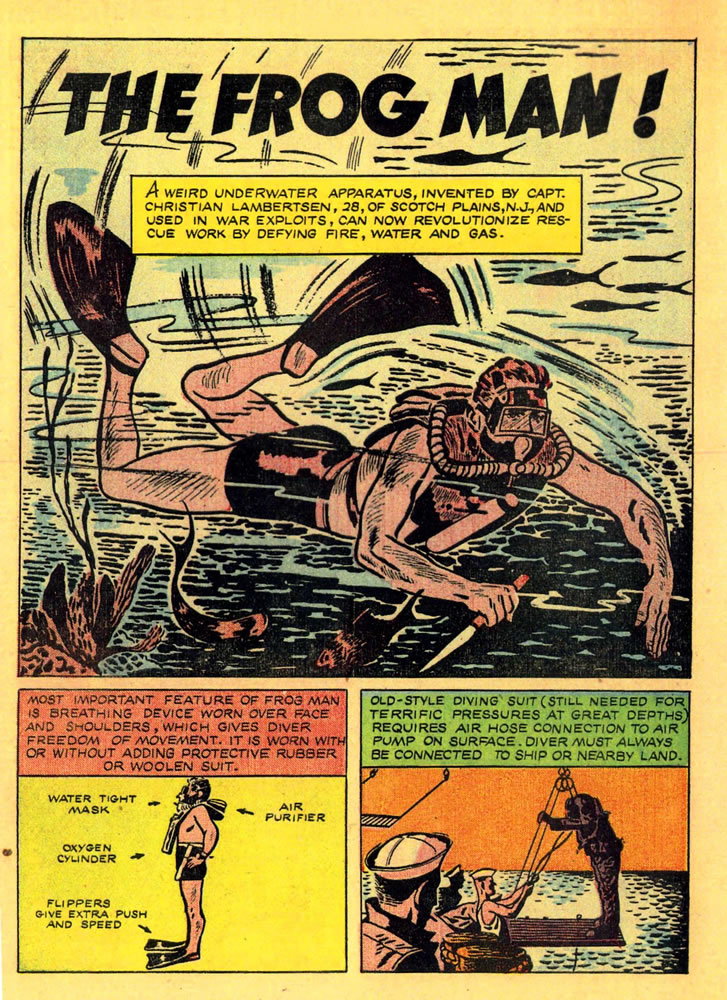
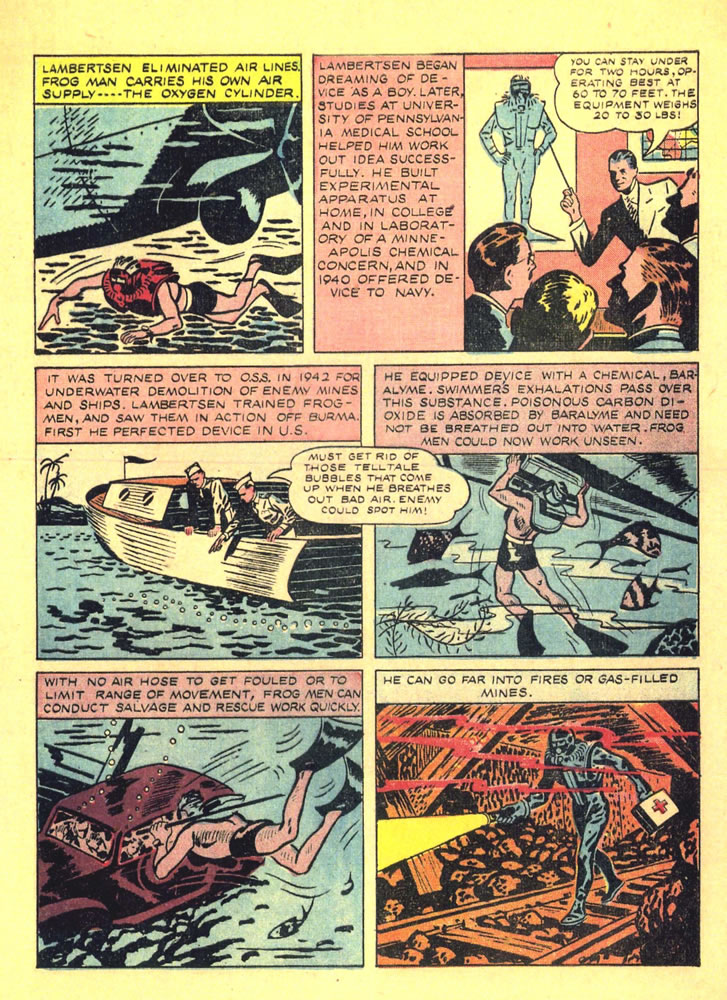
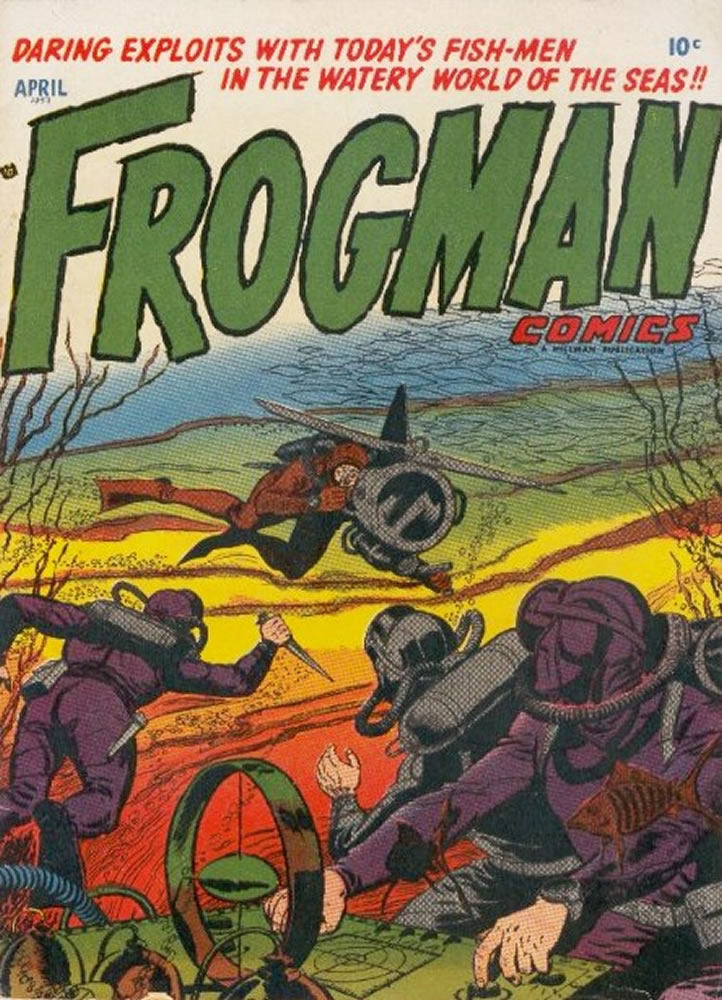
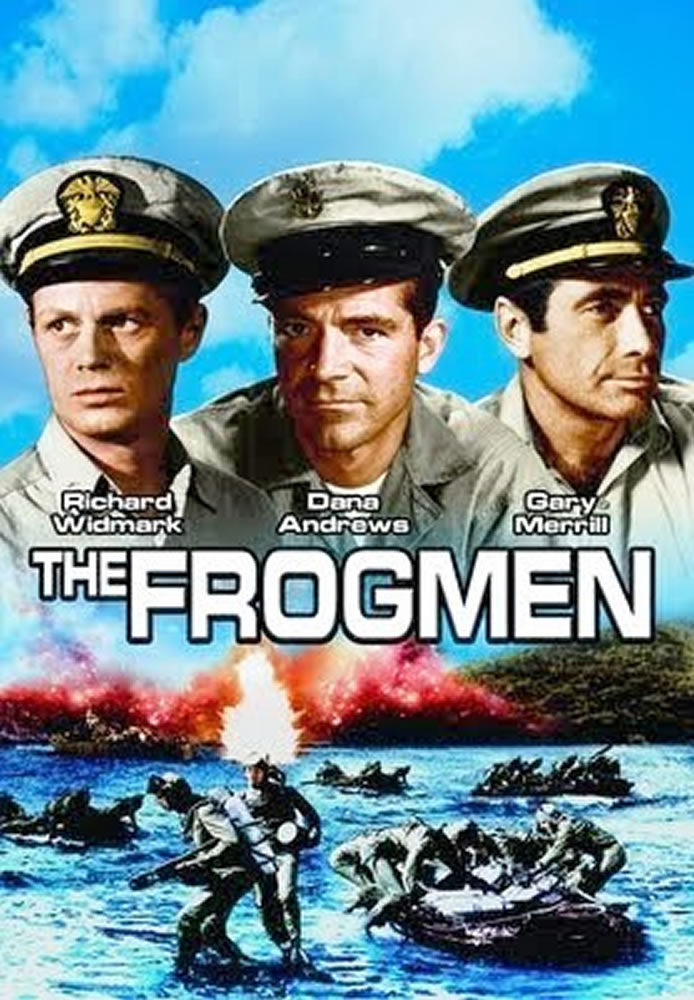
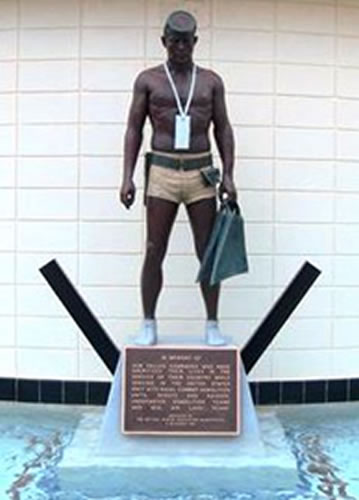
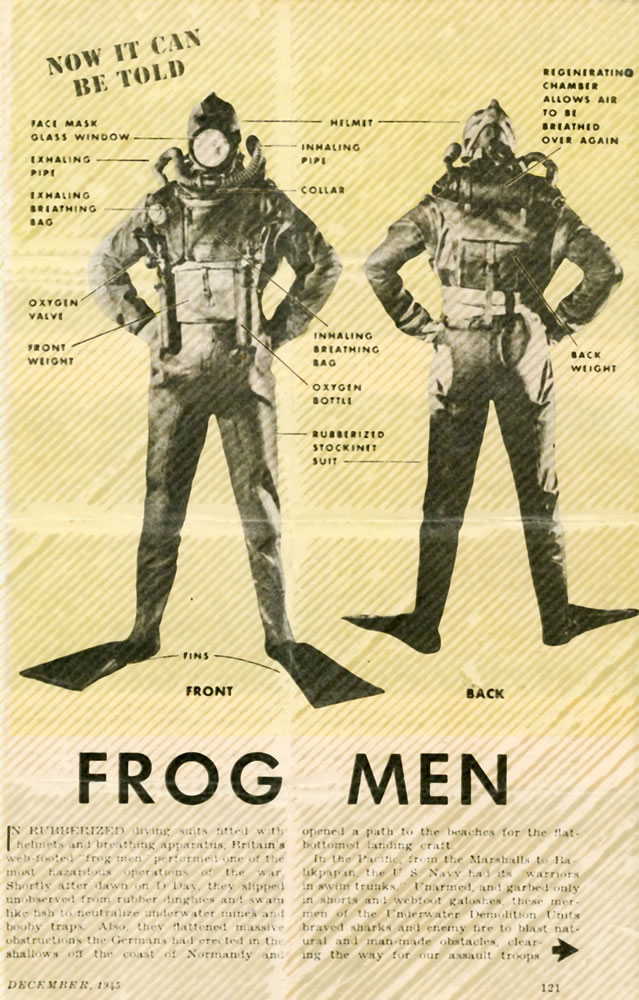
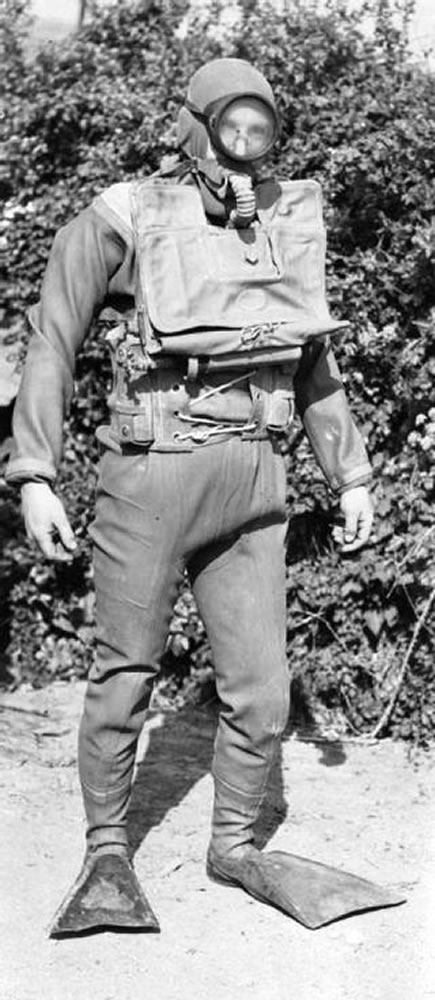
This is a page from an unknown British magazine dated December 1945. The caption reads: IN RUBBERIZED diving suits fitted with helmets and breathing apparatus, Britain’s web-footed “frog men” performed one of the most hazardous operations of the war. Shortly after dawn on D-Day, they slipped unobserved from rubber dinghies and swam like fish to neutralize underwater mines and booby traps. Also, they flattened massive obstructions the Germans had erected in the shallows off the coast of Normandy and opened a path to beaches for the flat-bottomed landing craft. In the Pacific, from the Marshalls to Balikpapan, the U.S. Navy had its “warriors in swim trunks.” Unarmed and garbed only in shorts and webfoot galoshes, these mermen of Underwater Demolition Units braved sharks and enemy fire to blast natural and man-made obstacles, clearing the way for our assault troops…(no additional narrative). The word “mermen” is British humor and take on the word “mermaid.” It is not in the dictionary.



